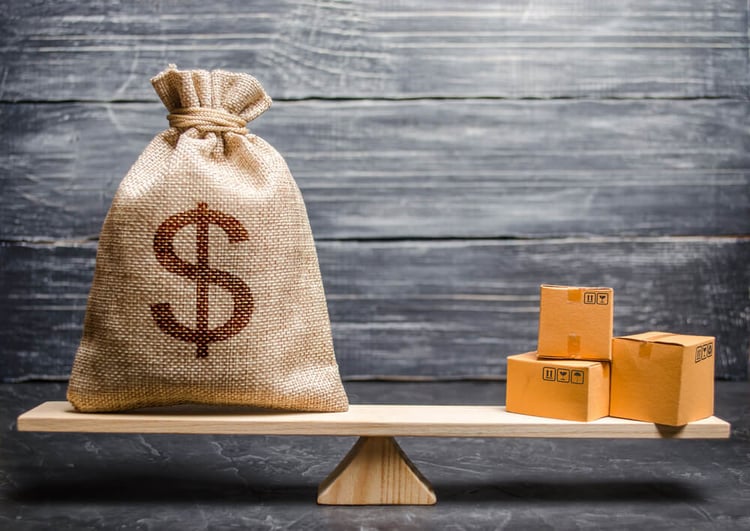 Costs associated with the supply chain process have always been a concern for businesses. But those aspects of business results are magnified when the supply chain is suddenly rife with trouble.
Costs associated with the supply chain process have always been a concern for businesses. But those aspects of business results are magnified when the supply chain is suddenly rife with trouble.
Even as your business struggles to work out ways to get products to the warehouse and then into customers’ hands, what about when those products need to move in the opposite direction? When not managed properly, the reverse logistics supply chain can be costly and unwieldy. So, how does reverse logistics work, and how can your business take advantage of this process to reduce costs and derive some other key business benefits?
What is Reverse Logistics?
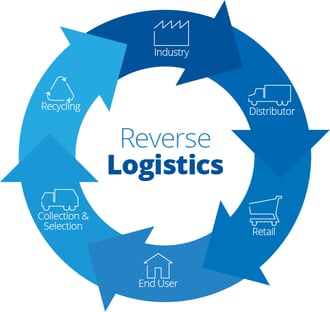 Reverse logistics refers to the operations related to moving products and materials from the end-user back through the supply chain to sellers, suppliers, manufacturers, or disposal and recycling companies.
Reverse logistics refers to the operations related to moving products and materials from the end-user back through the supply chain to sellers, suppliers, manufacturers, or disposal and recycling companies.
For retailers, reverse logistics happen daily when customers return products for a variety of reasons. How those products get back to the store or manufacturer and what gets done with them are all functions of reverse logistics.
6 Benefits of an Efficient Reverse Logistics Process
The return process is a necessary part of selling products or materials. Customers expect to be able to return something that doesn’t work for them, just plain doesn’t work, or has reached the end of its useful life.
You can “wing it” with your returns process, but this would be a terrible business decision. Most products, even recalled or broken ones, still have some useful value. And your current and potential customers are paying attention to how you handle those returns. So, it makes sense to invest some time and resources into creating an efficient reverse logistic process. In fact, here are six benefits of doing so:
1. Lower Costs
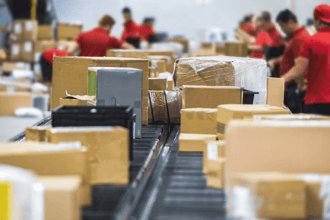 An efficient reverse logistics system can help your business cut its costs in several ways. By having the right players and processes in place, you can save costs related to transportation, administration, repairs, tech support, Quality Assurance, marketing, and disposal.
An efficient reverse logistics system can help your business cut its costs in several ways. By having the right players and processes in place, you can save costs related to transportation, administration, repairs, tech support, Quality Assurance, marketing, and disposal.
You can measure cost savings by tracking the total cost of ownership of each product category. If you are regaining value from resold or recycled items and the rest of your business is operating efficiently, your bottom line will improve.
2. Happier Customers
 One of the best ways to meet your business goals is to focus on customer retention. It’s much more difficult to attract new customers than to keep the ones you already have. Research shows that roughly 96% of consumers are willing to buy from a retailer again if they have a positive return experience. Some of the ways you can make your customers happy with their return experience include:
One of the best ways to meet your business goals is to focus on customer retention. It’s much more difficult to attract new customers than to keep the ones you already have. Research shows that roughly 96% of consumers are willing to buy from a retailer again if they have a positive return experience. Some of the ways you can make your customers happy with their return experience include:
- Provide free return shipping
- Give customers a full refund (don’t charge restocking fees)
- Don’t require customers to send back the original packaging
3. Better Brand Reputation
Customers pay attention to how you handle reviews. In fact, some won’t even deal with your business if you don’t have a friendly return policy. If you are known for giving customers a hard time when they want or need to return something, it’s going to hurt your business. On the flip side, if your business gets a reputation for no-hassle returns, like Amazon or Zappos, it will do wonders for your overall brand reputation and attract new customers.
4. Reduced Risk
While this benefit may not apply to every business, a proper reverse logistics process will take into account any risk associated with product exchanges and disposal. Some products might be subject to a safety recall and require immediate disposal. Others may contain sensitive data that must be erased before recycling or disposal.
5. Improved Sustainability
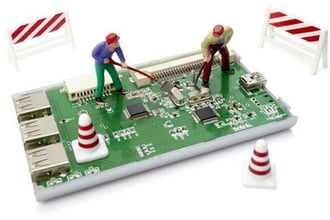 There’s a common misconception that everything coming back through the supply chain is junk and ready for disposal. Some items require proper disposal, but many can still be used. By putting items to additional use, you are keeping them out of the landfill for as long as possible.
There’s a common misconception that everything coming back through the supply chain is junk and ready for disposal. Some items require proper disposal, but many can still be used. By putting items to additional use, you are keeping them out of the landfill for as long as possible.
You can also offer to recycle or properly dispose of certain items, like electronics, so that they have less of an environmental impact. These actions have the added benefit of improving your brand image.
6. Higher Profits
One of the most significant benefits of optimizing reverse logistics is the impact on your bottom line results. Remember, many items returned by customers were simply the wrong size, color, or model # for their needs. The products are often in perfect shape for re-sale.
A well-oiled reverse logistics process will set up the hassle-free return with the customer, receive the product at a staging area, inspect it, make any necessary repairs, and place it back into inventory for sale. Some items might be discounted or marked as reconditioned, but the revenue is money you wouldn’t receive if you hadn’t established this secondary market for your products.
Utilizing Technology in Reverse Logistics
Now that you understand how vital it is to ensure an optimized flow of products in the reverse supply chain, how can you best accomplish this? For most businesses, it comes down to a combination of efficient processes and the right technology.
Every business is different, so how you structure your reverse logistics process might vary from another organization. Fortunately, there are several technology solutions that can help you manage reverse logistics and derive those benefits we just listed. Among them are:
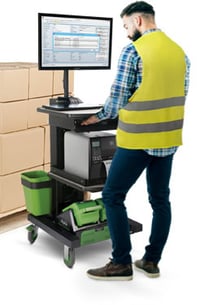
- Warehouse Management Systems (WMS) - A warehouse management system (WMS) is an all-in-one data tool to manage your warehouse’s operations, including reverse logistics. In addition to modules that manage returns, you’ll get advanced analytics that will help you improve your processes and make better business decisions.
- RFID Tags & Bar Codes - Using RFID tags or bar codes can help you track products at every step in the supply chain, giving customers and your managers more visibility into returns.
- Mobile Carts - Mobile powered carts in your warehouse can increase the receiving accuracy of returned items and boost worker productivity.
With more people shopping online than at any time in the past, having a sound reverse logistics strategy is vital to the success of your business. Fortunately, there are many technology solutions and strategies that can put your business in a position to achieve more cost savings, have happier customers, and improved sustainability.











